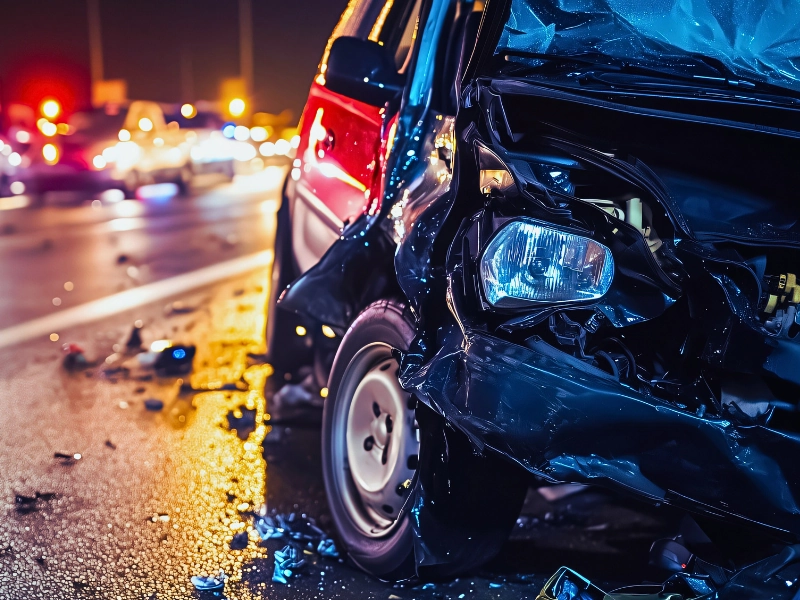Car accident liability in Cincinnati’s metropolitan area differs depending on the state, with some states working with fault or no-fault insurance or handling claims differently. With a better understanding of local liability laws and claims processes, you can figure out how to approach your case with the help of a car accident attorney.

To file a car accident claim against a liable party in the Cincinnati metro area, call Young, Reverman & Bolotin at 513-400-0000 for a free consultation with a motor vehicle accident attorney in Cincinnati.
Table of Contents
How Car Accident Liability Laws Differ Across Ohio, Kentucky, and Indiana
When a car accident takes place in the Cincinnati metropolitan area, car accident liability in Cincinnati will depend on the state where the accident occurred. Some states will hold the driver who caused the accident liable, while others may have no-fault insurance laws that don’t make the driver liable, even if a party was clearly responsible for the accident.
According to data from CincyInsights under the Office of Performance & Data Analytics (OPDA), recent years have seen 14,990 to 15,918 accidents per year in the City of Cincinnati alone. Many of these accidents result in injuries and extensive property damage that warrant compensation.
However, in an attempt to help reduce the number of accidents, the Advocates for Highway and Auto Safety group wants to introduce liability laws in all three of these states, such as:
- More strictly enforced seat belt laws in Ohio
- A law requiring all motorcycle riders to wear helmets across all three states
- A child endangerment law in Indiana
- Restricted text messaging for drivers in Ohio
- A booster seat law in Kentucky and Ohio
Understanding Fault and No-Fault Insurance in Ohio, Kentucky, and Indiana
You might wonder who is liable for an accident when a driver is clearly at fault, or even who is liable for an accident at an unmarked crosswalk involving a pedestrian. In any case, determining fault mostly comes down to whether the state where the accident took place operates on fault or no-fault insurance.
Fault-based insurance laws dictate that a party responsible for an accident is the one responsible for covering the damages with financial compensation. Here, a car accident victim would file a claim against the liable party’s insurance company to begin seeking compensation. Ohio and Indiana are both at-fault states that use the fault-based insurance model.
Meanwhile, no-fault insurance laws will require all parties involved to file insurance claims with their own insurance company through personal injury protection (PIP) coverage. However, in cases where an accident is serious enough and results in severe injuries or thousands of dollars worth of property damage, victims may be able to seek compensation from the liable party in a lawsuit. Unlike Ohio and Indiana, Kentucky is a no-fault state.
How Each State Handles Car Accident Claims and Damages
If you get involved in a car accident in any of the three states in this area, it’s important to know how each state will handle the claims process and all damages involved.
In Ohio and Indiana
Following an accident in either Ohio or Indiana, victims of accidents will need to file a claim against the liable party’s insurance company. During this process, you will need to negotiate a settlement with the at-fault insurance adjuster, who is likely to try to minimize or deny your claim to avoid paying out.
Comparative fault in car accidents come into play in both Ohio and Indiana, meaning claimants could see a reduction in the amount of compensation they’re able to recover based on the percentage of shared fault. In turn, the other liable party must be at least 51% at fault in both Ohio and Indiana for you to recover compensation.
Depending on the nature of the case and your insurance policy, you may also have the option of going through your own insurance policy or filing a personal injury lawsuit against the liable party.
In Kentucky
Because this state has no-fault insurance laws, victims would need to file a claim with their own insurance company, regardless of who’s at fault. Normally, you would file with your policy’s PIP coverage, which can cover a percentage of the damages sustained in an accident.
However, if the damages are extensive enough and PIP coverage won’t provide sufficient compensation, you may opt to file a personal injury lawsuit against the liable party to seek total compensation.
What Happens If You’re Involved in a Car Accident Across State Lines in the Cincinnati Metro?
In the event of a car accident that occurs anywhere in the tri-state area, the steps you take shortly after the accident will determine whether you’re able to effectively pursue a case.
These steps entail:
Seeking Medical Attention
If an injury occurs, it’s important to seek treatment as soon as possible to obtain a formal diagnosis and medical records, which can help prove that the accident caused your injuries. Medical records are among the most important evidence needed in car accident cases.
Collect Evidence to Support Your Claim
In addition to seeking treatment, you’ll need to collect ample evidence to build a claim. Evidence could include footage of the accident and your injuries and other damages, police reports, witness statements, and more.
Consult a Car Accident Attorney
Before pursuing a claim or lawsuit, it’s important to consult a car accident lawyer in Ohio, Kentucky, and Indiana with experience handling these cases. An attorney can help you determine what options are available to you, negotiate a settlement with insurers, or represent you in a lawsuit against liable parties. Attorneys can also answer questions like, “How are car accident settlements calculated?”To take legal action following an accident in Cincinnati, contact us today at Young, Reverman & Bolotin to consult with one of our motor vehicle accident lawyers.

